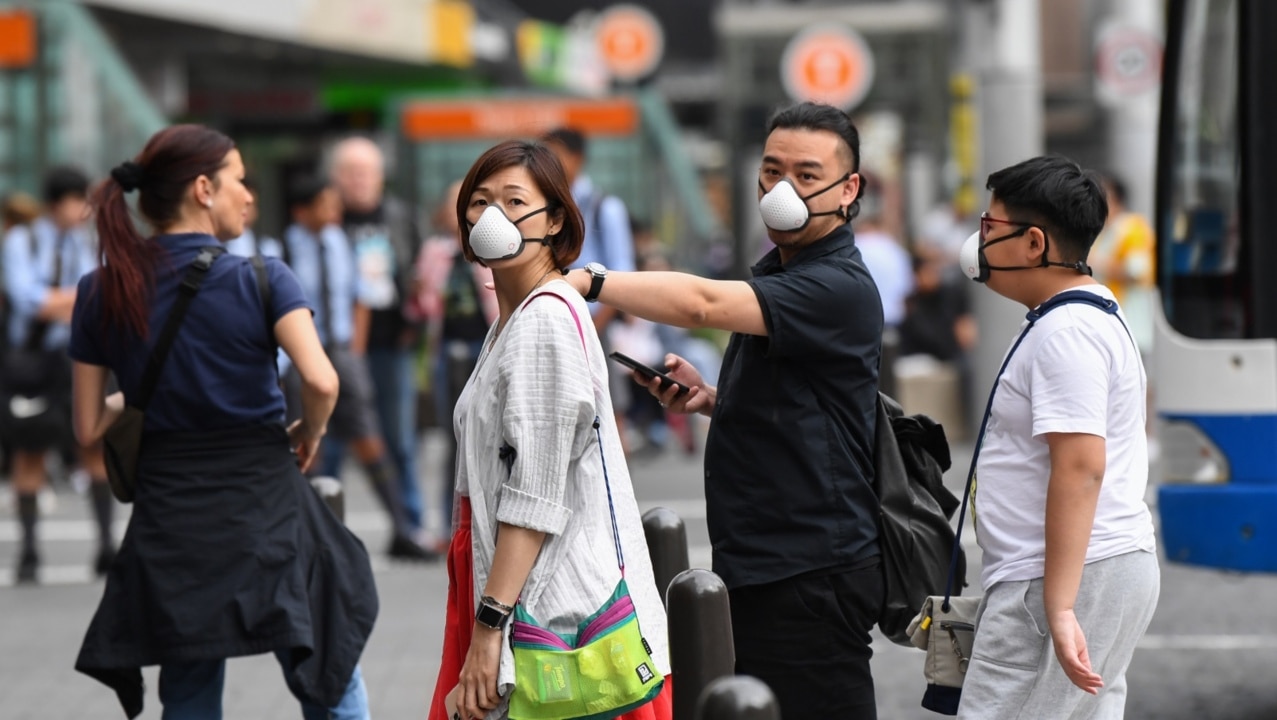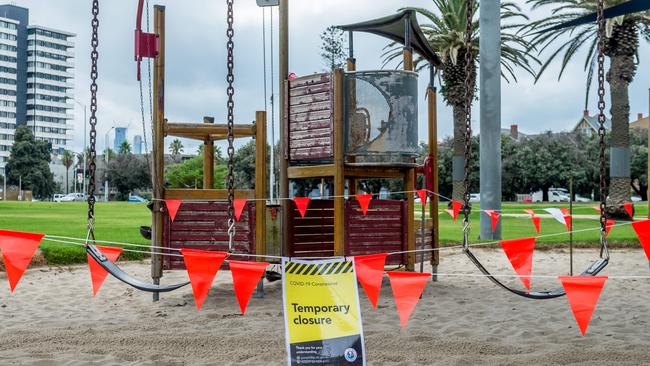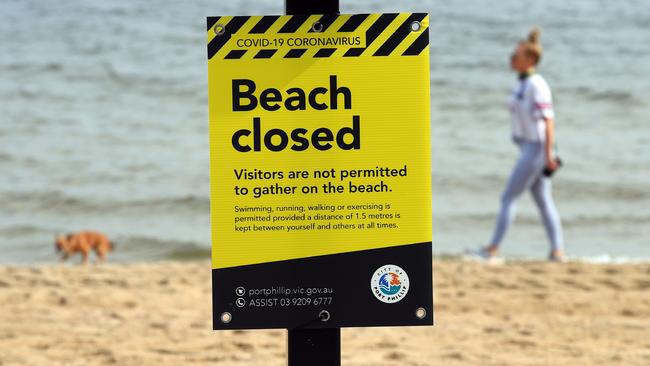The three things Victoria needs to achieve before coronavirus restrictions can be eased
There is plenty of talk about how and when stage 3 restrictions could be eased when Victoria’s state of emergency ends in May. Here’s what’s needed before there will be any change.

Coronavirus
Don't miss out on the headlines from Coronavirus. Followed categories will be added to My News.
Unprecedented restrictions on our everyday lives could start to be eased in four weeks as Australia leads the world in detecting coronavirus cases in the community.
The National Cabinet’s first priority will be to switch on “high-value, low-risk” economic activities — such as work in offices and factories — if the virus can be successfully suppressed in the next month.
Prime Minister Scott Morrison says the road out of the pandemic will “in broad terms” be the reverse of the road in, meaning limits on going outside for essential reasons could be reviewed sooner rather than later.
But he insisted some restrictions would be needed for at least six months — and that social distancing and hand hygiene will be essential until a vaccine is found.

Victoria has a state of emergency in place until May 11, and Mr Morrison indicated our tougher stay-at-home measures will also be reviewed during the next month.
Before making any changes, the National Cabinet wants to develop three key capabilities:
BROADER surveillance testing to track down asymptomatic cases evading authorities and ensure the speedy identification of any outbreaks.
EXPANDED tracing of who infected patients have been in contact with, using an app to be made available in about a fortnight.
STRENGTHENED local response capabilities — potentially using Defence resources — to contain outbreaks.
Mr Morrison said the National Cabinet was focused on keeping the “effective reproduction number” under one — meaning each infected person was spreading the virus to less than one other, on average.
Doherty Institute experts Professor Jodie McVernon and Professor James McCaw, who are leading the cabinet’s modelling, write in today’s Herald Sun that every 10 infectious cases are currently only producing five more cases.
But in a “word of caution” for Australians they said the virus would “rapidly accelerate” if rules were relaxed now, and that those 10 cases would produce 25 new infections.

Chief Medical Officer Brendan Murphy said Australia’s testing regimen was leading the world by detecting 92 per cent of all symptomatic cases.
Mr Morrison said the National Cabinet was aiming to suppress the virus, and that using an “eradication mode” to defeat it completely would not be “a wise trade-off” given its economic impacts.
Prof Murphy said Australia’s numbers were “very encouraging” but that if social distancing measures were relaxed now, it would “inevitably lead to some more outbreaks of community transmission”.
“That could lead to situations like we’ve all seen every night on the nightly news in high-income countries with good health systems like the USA and the UK,” he said.
Victoria identified just two new cases yesterday, taking the state total to 1301, along with 14 deaths. A further 39 people remain in hospital, including 18 in intensive care.
Victorian Health Minister Jenny Mikakos said she was “relatively optimistic” about the state’s position, and that an initial easing of restrictions could help Victorians reunite with family and friends.
“We understand the importance of people remaining connected to their loved ones. We will be guided by the advice around risks,” she said.
The state’s chief health officer Brett Sutton said Victoria was in “a fragile state” but was hopeful tougher stage four restrictions would not be needed.
“If we continue on this track on low case numbers and continue to drive them down, there is no question that we can have greater freedoms and liberties,” he said.
MORE NEWS
FOOD FREEZING MEGA GUIDE: WHAT YOU MUST KNOW
